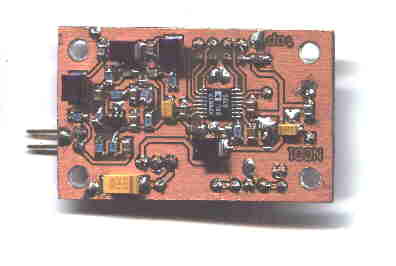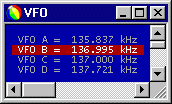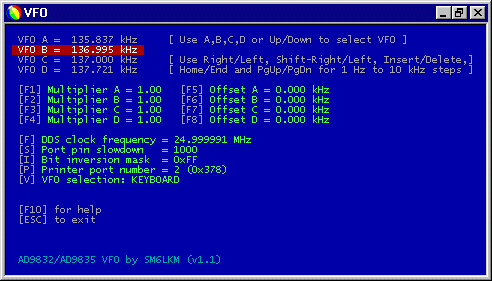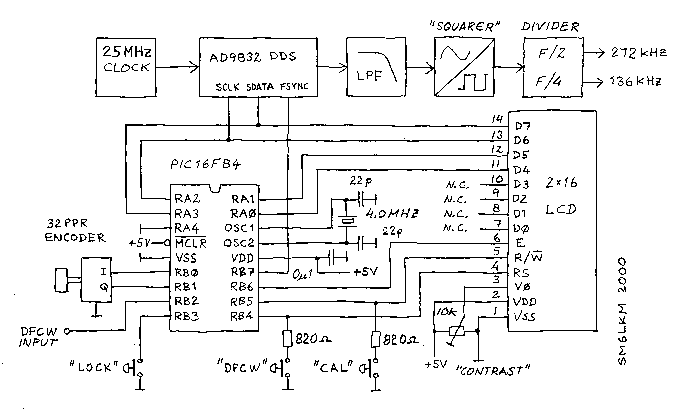

|
|
||
|
\главная\р.л. конструкции\... |
Build a PIC controlled DDS VFO, 0 to 6 MHz
 |
 |
|---|
Files contained in MINIDDS.ZIP:
| readme.txt | Read this first! |
| compplac.pdf | Component placement in PDF format |
| schema.pdf | Schematic diagram in PDF format |
| top.ps | PCB top copper layer in Postscript format |
| bottom.ps | PCB bottom copper layer in Postscript format |
| ad9832_4.asm | PIC assembly source code |
| p16f84.inc | Needed for assembly of ad9832_4.asm (for 'F84) |
| p16c84.inc | As above but for 'C84 |
| vfo5x7f.hex | PIC16F84 program for LCD with 5x7 font |
| vfo5x10f.hex | PIC16F84 program for LCD with 5x10 font |
| vfo5x7c.hex | PIC16C84 program for LCD with 5x7 font |
| vfo5x10c.hex | PIC16C84 program for LCD with 5x10 font |
| filtresp.pcx | Computed frequency response of lowpass filter |
Download MINIDDS.ZIP (186K)


If you prefer to control the DDS module from
a PC (instead of using a PIC), try this:
Download PCVFO.ZIP (18K)
The zip archive contains a single file, VFO.EXE. It is a DOS program but it runs fine in a Windows 95/98 "DOS bubble" as well (see screenshots above).

Almost any 2x16 character LCD module with Hitachi HD44780 controller chip will work. The LCD pin numbers on the schematic are not valid for all LCD modules. Please check the actual signal names on your particular LCD module.
The selected DFCW frequency offset will be added to the output frequency when the DFCW input is grounded. This input has a weak pull-up in the PIC.
The encoder inputs also have internal pull-ups in the PIC.
The switches "LOCK", "DFCW" and "CAL" are momentary pushbuttons.
Original scheme from http://home4.swipnet.se/~w-41522/index.html